Rose hip is a type of fruit that grows on rose plants. They come in a variety of colors, ranging from a dark intense purple to a bright red to orange and black. This fruit can be eaten raw as a berry, but it also makes an excellent power food in jams, syrups, jellies, and as a component of nutritious and healthy smoothies. It is also beneficial to guinea pigs.
Absolutely yes, guinea pigs can eat the rose hip. However, be aware that this fruit is sweet and contain sugar in large amounts. This is why you need to give them rose hip in moderation with proper serving sizes.
Table of Content
Is Rose Hip Good for Guinea Pigs? | Health Benefits
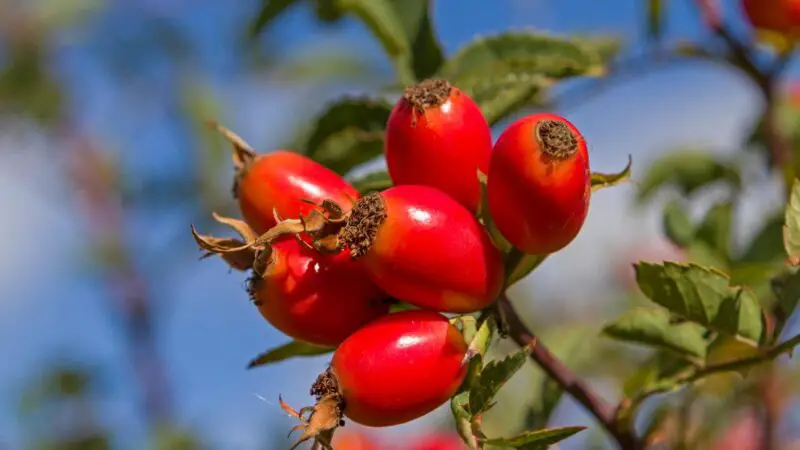
Rose hip contains a good amount of vitamin C and this is goof for the pet’s health and lifestyle. When guinea pigs are lacking vitamin C, they develop complications such as scurvy. This is a disease that causes hair loss, external bleeding, diarrhea, reduced appetite and energy, and induces arthritic pain.
Another benefit is the low percentage of fat contained in the fruit. This is optimal because it makes rose hip a perfect snack and meal for the guinea pig.
Surprisingly, the rose hip has high percentages of iron . This can be beneficial for your guinea pig’s red cell count. This can be important for pregnant sows that need not only extra energy and food but also the highest quantities of red cells to cope with the pregnancy.
Nutrition Facts of Rose Hip
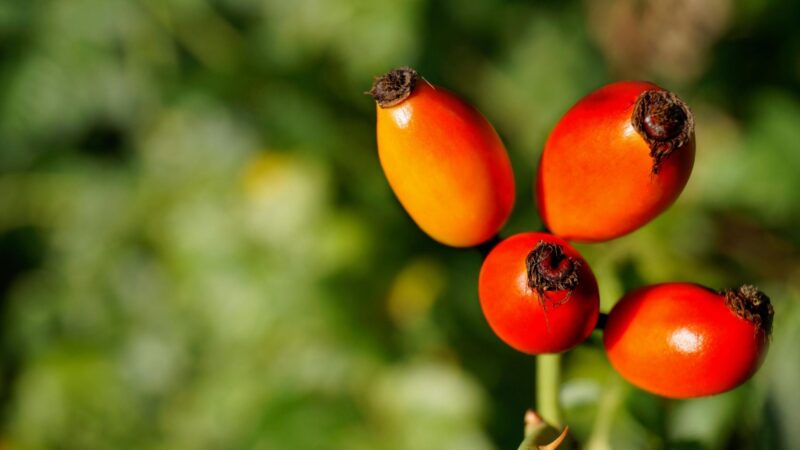
With 100 g of rose hip, these are the nutrients:
- Calories – 160
- Total Fat – 0.2 g
- Sodium – 5 mg
- Potassium – 430 mg
- Total Carbohydrate – 40 g
- Dietary fiber – 25 g
- Sugar – 2.5 g
- Protein – 1.7 g
- Vitamin C – 715%
- Vitamin A – 85%
- Magnesium – 20%
- Calcium – 15%
- Vitamin B-6 – 6%
- Iron – 7%
As you can see, the rose hip is packed with nutrients! No wonder it’s a hit amongst guinea pigs and humans. They hold many important key minerals and vitamins.
Is Rose Hip Bad for Guinea Pigs? | Possible Risks
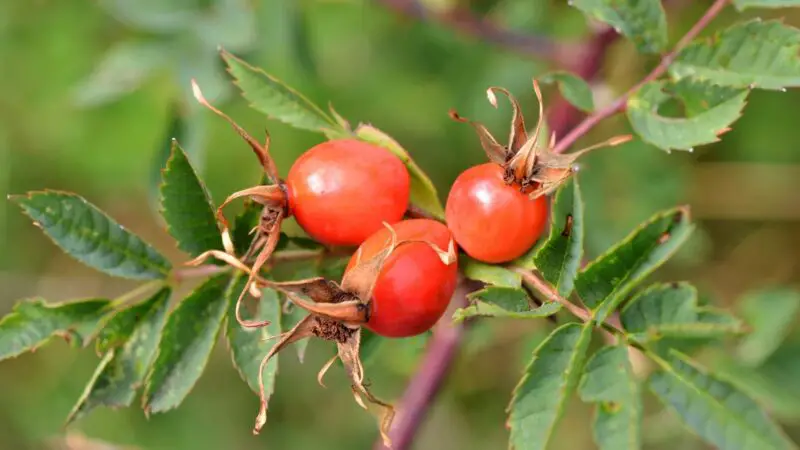
Although there are many benefits of feeding your guinea pig with rose hip, there are also some considerations we need to take into account:
- Sugar levels – The fruit can at times contain high levels of sugar. This can potentially damage your pet’s health and diet and create complications with its heart, circulation system, and blood pressure.
- Fruit hairs – When feeding your pet with rose hip, make sure you remove the hairs that are found inside of the fruit. We, therefore, recommend that you slice up the fruit, remove carefully all the hairs within it, and position the rose hip in the eating corner in your pet’s cage.
- Complications – When excessive amounts of the rose hip are consumed, there are further physical complications. These include diarrhea, vomiting, cramps, hyperactivity, fatigue, and pain.
Serving Size, Preparation and Frequency of Rose Hip
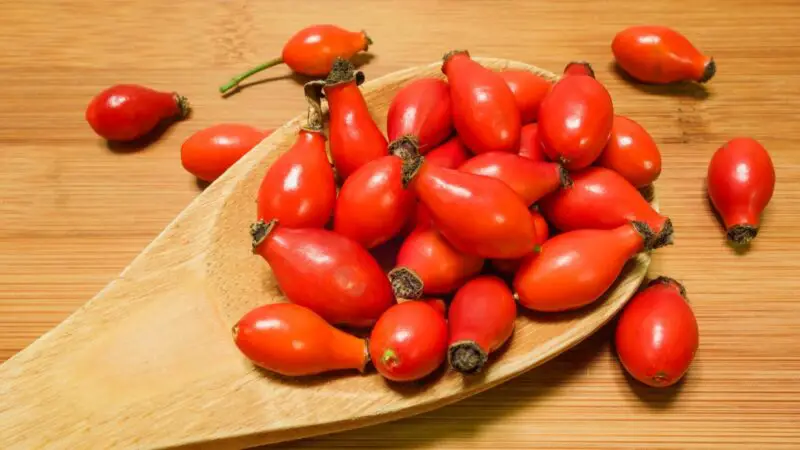
Choose quality over quantity when feeding your pet. Rose hip may be high in vitamin C but its sugar levels are not recommended for daily and constant consumption. The ideal daily serving size should range from 5 to 10 grams and only 2 to 3 times a week.
Don’t worry though, this fruit is very much welcomed in the pet’s diet! Just cut up the fruit and remove the internal hairs. Otherwise, they can compromise the guinea pig’s health.
If your pet is new to rose hip, the best way to introduce the fruit to your guinea pig is to give small pieces slowly at a time. Also, check to see whether your pet has more of a sweet tooth or has a soft spot for savory snacks.
How Easy Is It to Get and Grow Rose Hip?
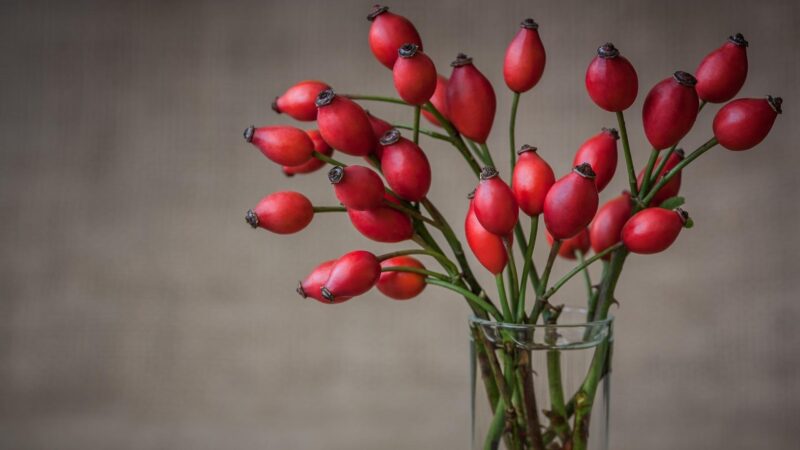
Depends on your time availability. If you have more time on your hands, then we suggest you grow them fresh from rose plants. In this way, you and your pet can enjoy the freshness and home produce.
Have no worries if you don’t have time to grow them on your own. You can acquire them at your local supermarket or pet store, or explore the internet for feasible options.
Otherwise, as an alternative, rose hip can also be found in a powder form, which can be diluted into water and given to the pet. The only warning is that bacteria may grow quickly in the water bottle and the vitamin C properties are gone after long exposure. This method is not recommended.
Quick and Fun Facts About Rose Hip
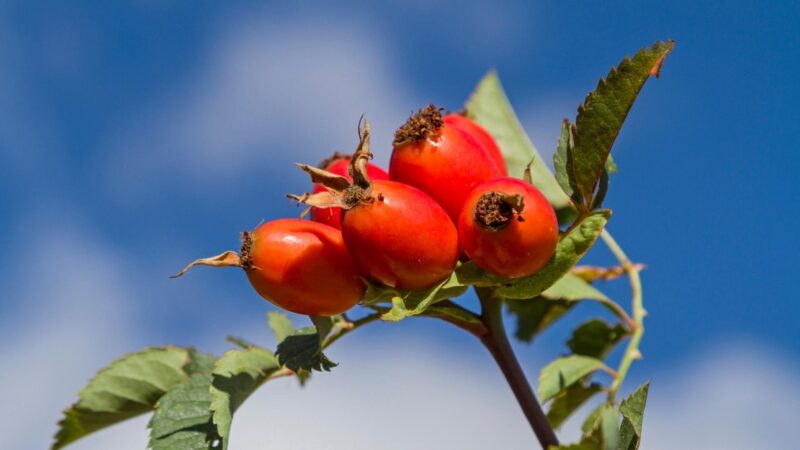
- Rose hip is one of the fruits with the overall highest vitamin C content.
- Rose hips can be made into jelly, juices, syrups, jams and if left to dry out long enough, into delicious tea!
- The hip can be used for minor medicinal practices and turned into therapeutic massage oil.
- The seeds can be used as ingredients for beauty products, such as make-up, creams, masks, and face cleansing.
- You can even brew beer or wine with rose hip!
- Many religions across the world find rose hips sacred and a divine gift.
- Fruit on a rose is known as achenes, where a single enclosing contains a single unique seed, which is found inside the hip. The rose hips are developed from stem tips that swell in order to enclose their hairy achenes. Lastly, the hip skin is initially green and then can develop into shades of burnt orange, bright red, deep purple, or black.
- Rose hip was once a medicine used for dog bites, stomach cramps, diarrhea, and menstrual complications. In fact, the British kept the fruit within pharmacopeia, an official list regarding medicinal drugs that had their effects and instructions on how to use, until the end of the 1930s.
- Rose hip juice and syrup were used during World War I and World War II to prevent the soldier from developing diseases, such as scurvy. It is also use to boost their immune system and fight off any further complications.
We have also made a full list of foods that guinea pigs can and can’t eat (150+ Types of Foods). Be sure to also check our recommended products page for everything you will ever need to assure a happy life for your guinea pigs. Hope this information was helpful and you have found the answer you were looking for.
List of Sources
Nutrient Requirements of Laboratory Animals: Fourth Revised Edition
The Effects of Diet on Anatomy, Physiology and Health in the Guinea Pig
